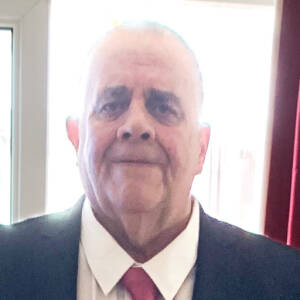Tredegar House
History of the Building
The earliest surviving part of the building dates back to the late 15th century.[3] The house was originally built of stone and was very grand indeed, grand enough for Charles I to visit. Between 1664 and 1672, however, William Morgan decided to rebuild the house on a larger scale from red brick, at that time a rare building material in Wales. The name of Inigo Jones has been linked with the building - but this not confirmed by sources, and it seems we will never know who the architect was. In his 1882 publication, local historian Octavius Morgan provides a plan of an intricate garden maze which was in place prior to the 1660s improvements and which probably dated from the time of Queen Elizabeth I.[4]
The Tredegar Morgans 1402–1951
Tredegar's name came from Tredegar Fawr, the name of the mansion or seat of the old Morgans, who were descended from Cadifor the Great the son of Collwyn; and the owners of the land upon which Tredegar stands. The earliest record of someone with the name Morgan living at Tredegar is 1402: a Llewellyn Ap Morgan. Today Tredegar House, set in a beautiful 90 acre park, is the finest Restoration house in Wales and for over five hundred years the estate (including Ruperra Castle) was home to the Morgan family, later Lords Tredegar; one of the most powerful and influential families in the area.
John Morgan was created a Knight of the Holy Sepulchre (possibly c.1448). Later, when Henry Tudor was crowned King Henry VII it was of great benefit to the Morgans of Tredegar who were great supporters of Henry. Sir John received reward for his early support, and on 7 November 1485 he was appointed by the new king to the office of ‘Sheriff of Wentloog and Newport’ and made ‘Steward’ of the Machen Commote. His elevation to officer of the Tudor crown placed Sir John Morgan's influence and power at a new height. Around 1490, he commissioned the building of a new house at Tredegar. A wing of Sir John's stone manor house still exists. It is now the oldest part of the present day Tredegar House.
A cadet branch of the ‘Tredegar Morgans’, probably nephews of Sir Thomas Morgan, included three brothers, Thomas, Robert and Edward. Thomas became Major-General Sir Thomas Morgan, 1st Baronet (1604–79), served in the Commonwealth forces during the English Civil War 1642-9, was made Governor of Gloucester in 1645, fought in Flanders, was wounded and in 1661 retired to his estate at Kynnersley, Hertfordshire. Recalled in 1665 to become Governor of Jersey, he died at St Helier in April 1679. Married on 10 September 1632, he had nine sons, of whom the eldest, Sir John Morgan followed in his father profession. Robert Morgan, (born circa 1615) became a farmer in Llanrhymny, known today as Rhymney three miles from Tredegar, and was father of Henry Morgan (who would have a successful career in the Caribbean as a privateer, and pirate). Edward Morgan became Colonel Edward Morgan (born circa 1616 - Colonel after 1665), a Royalist during English Civil War 1642-49 and Captain General of the Kings forces in South Wales. After the King's arrest and execution, he fled to the continent and married Anna Petronilla the daughter of Baron von Pöllnitz from Westphalia (Governor of Lippstadt, 20 miles east of Dortmund in Germany). They had six children, two sons and four daughters (including Anna Petronilla and Johanna). He was appointed Lieutenant Governor of Jamaica 1664-65.
During the civil war after the Battle of Naseby, King Charles I visited Tredegar House in 1645. In 1661 William Morgan (d.1680) rebuilt the house on a very grand scale, with the help of the huge dowry of his wife, Blanche Morgan. Their fortunes continued to flourish down the generations, tremendously enhanced by the foresight and business enterprises of Sir Charles Gould throughout the 18th century. Following his father's financial successes, his son further expanded several commercial and industrial projects, and virtually established Newport as an important trade centre. Whilst consolidating their influence on the political and economic issues of the country, they secured a baronetcy in 1859.
In 1854, Godfrey Morgan fought in, and survived, the Charge of the Light Brigade at Balaclava. Godfrey was 22 and Captain in the 17th Lancers. His steed, Sir Briggs, also survived and lived at Tredegar House until the horse's death at the age of 28. The horse was buried with full military honours in the Cedar Garden at Tredegar House. The monument still stands there today. In 1905 Godfrey was created the first Viscount Tredegar. He never married and on his death the estate passed to a relation. In 1920, the Tredegar Park Polo Club was founded at Tredegar House.[5]
Later, extravagance, eccentricities, and weighty death duties seriously depleted the family's financial assets throughout the next three generations. John Morgan, 6th Baron Tredegar died childless in 1962 aged 54. His death signalled the end of the Morgans of Tredegar. In 1951, Tredegar House was stripped, the remaining contents were auctioned, and the estate was sold.

Comments
Sign in or get an account to comment.


